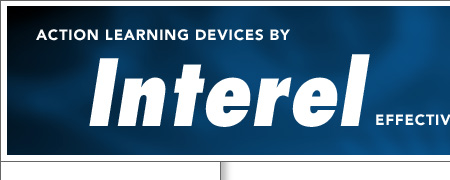

"Amazing Maze" by Bill Faust
In the late 1980's I made a career veer from International Finance MBA into a newly born Motorola University as Manager of Executive Education. These were the very early days when you had to drag people kicking and screaming into any classroom where Vision, Creativity or Intuition might be discussed.
One of the many great aspects of this job was having to go to all the New "What's Happening" Executive Education Offerings at the National Training Labs, and Center for Creative Leadership etc and it was at CCL in Colorado Springs that I first ran into what we at Motorola called "The Carpet." This was exactly what the new CEO, George Fisher, and Motorola University were looking for as an experiential exercise for one day of a five day Learning Experience On Vision, Creativity and Championing Change, a program for top and middle executives.
Motorola loved "The Carpet." We saw it as a wonderful experience and metaphor for learning about risk and trust with powerful feedback opportunities for how employees performed on a team, as a leader, follower, or cheerleader for example, as well as how failure and learning were processed in those same roles. We quickly bought three or four of Interel's early Electric Maze® EM1 mazes and traveled them all over the world.
Now this was pre 9/11 but let me tell you that you really got a lot of attention at Heathrow in those days when you showed up with something you were calling a carpet but looked and scanned like a six-foot stick of dynamite in a cardboard box with enclosed wiring and control box. A typical scenario was:
Guard: "What is that thing?" the Heathrow airport security guard repeated as a sweat began to show on his brow and he glanced around for some backup as he scanned "the carpet."
Bill: "It's an electronic carpet, an aid for experiential learning. We use it at Motorola University in the states, and in three or four other worldwide locations for training, we have three of them in total."
Guard: "You have more of these things? Are they here now? (glancing furtively around). When I scan that thing through special baggage it looks like a ten foot stick of dynamite with wiring and a control box."
Bill: "That makes sense," I replied, "it does have wiring and a control box," I sighed, as I once again had to open the maze at an airport security check for oversize baggage. The horror that was visible on the face of the Heathrow guard, who had been trained to spot horrible things on their scanners, was eventually replaced with the relief when he realized that the maze was, in fact, an electronic carpet, including wiring and a control box with mechanical switches. However, my name and several of my colleagues are certainly still on record at a number of International Airports, likely as some kind of exception to the usual terrorist profile to hand inspect regardless of appearance.
After several iterations of this scenario, we decided to buy more EM1's and LEAVE one in the UK, Singapore, & Malaysia. I had a team of external consultants and we were diligent about the same Feedback Skills that we facilitated amongst ourselves as well as with our clients and suppliers. We would meet with Boyd, the founder of Interel, maybe once a year somewhere, or he would invite himself to an event and was always welcome as kind of a "mad scientist" inventor/trainer, with a great deal of affection. The one piece of feedback that we always gave Boyd was that we would love to see "The Carpet" split into two pieces, making it much easier for us to transport. I give Susan El-Shamy of Indiana University at least half of the credit for this idea and although it did take a while for Boyd to get past all the technical challenges with the redesign, he did create the Electric Maze EM3 that was very well received at Motorola University, and the rest is history.
Over many years, we learned to try and downplay the typical competitiveness of the Motorola population by de-emphasizing speed and encouraging the opportunity to give and receive Feedback, and process lessons learned as your team negotiated the carpet. Still we couldn't help ourselves when asked what the record was for the fastest team to cross the carpet. We had long ago made up a story that a group of nuns, "The Little Sisters of the Poor" in Palatine, IL (still there) had negotiated the carpet in under 5 minutes and gotten their entire team across. This was actually half the best time we had ever seen. This was meant to de-emphasize the competition but it seldom worked within our population. For many years, Motorola had very little external competition and we had learned to compete within product lines, 2-way Radio vs. Paging vs. Cellular etc. And while there was some positive energy that came out of that competition, it became increasingly counter-productive as these product groups became increasingly competitive with each other in the 1990's. George Fisher, former CEO was once quoted in Business Week about this and described the Motorola Culture as "A Gang of Internal Warring Tribes", which was quite correct and then Kodak bought him.
So one group of participants decided that if they couldn't beat the Little Sisters of the Poor, they would find a way to beat us the facilitators. We had a very wild group of two-way radio and paging teams determined to find a way to beat the carpet and I am sure that we had egged them on as well. After they struggled greatly and did NOT beat The Little Sisters of the Poor, they asked if they could have another go at it after dinner (this was a five-day residential program) and we said sure, that we could link that topic on Risk & Trust & Feedback to any after dinner conversation.
So, I wasn't even paying much attention after dinner when I suddenly realized that one of the two teams was almost running across the carpet, without the usual "beep-beep" alarm that signaled, "yes you have learned something and yes you have to go to the end of the line." Now I've seen people try everything from high heels that may occasionally miss the sensors, to very soft barefooted shuffling but here it looked that somehow they had intuited the path, which of course we had changed to a different more difficult path.
Then I realized that we had been had and that one of our ever-resourceful Motorola engineers had snuck up behind one of my facilitators and turned off the control box, hence no beeping. This resulted in valuable feedback and learning for the facilitators. We learned to guard the maze path grid layout and the control box.